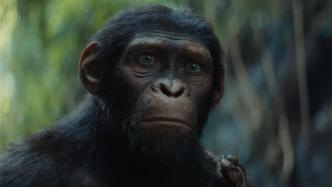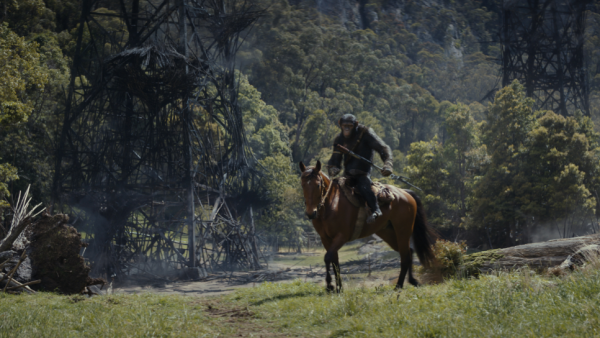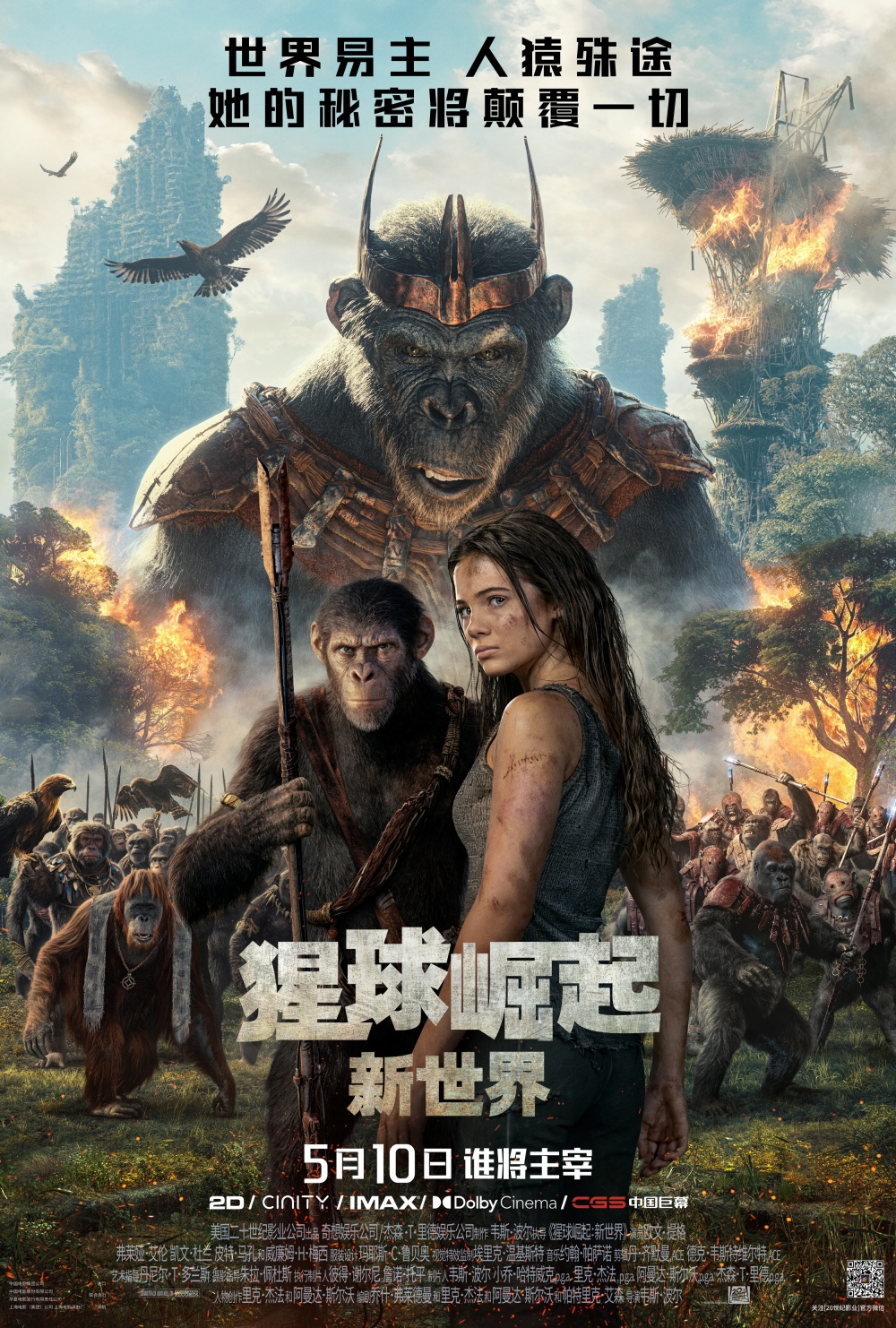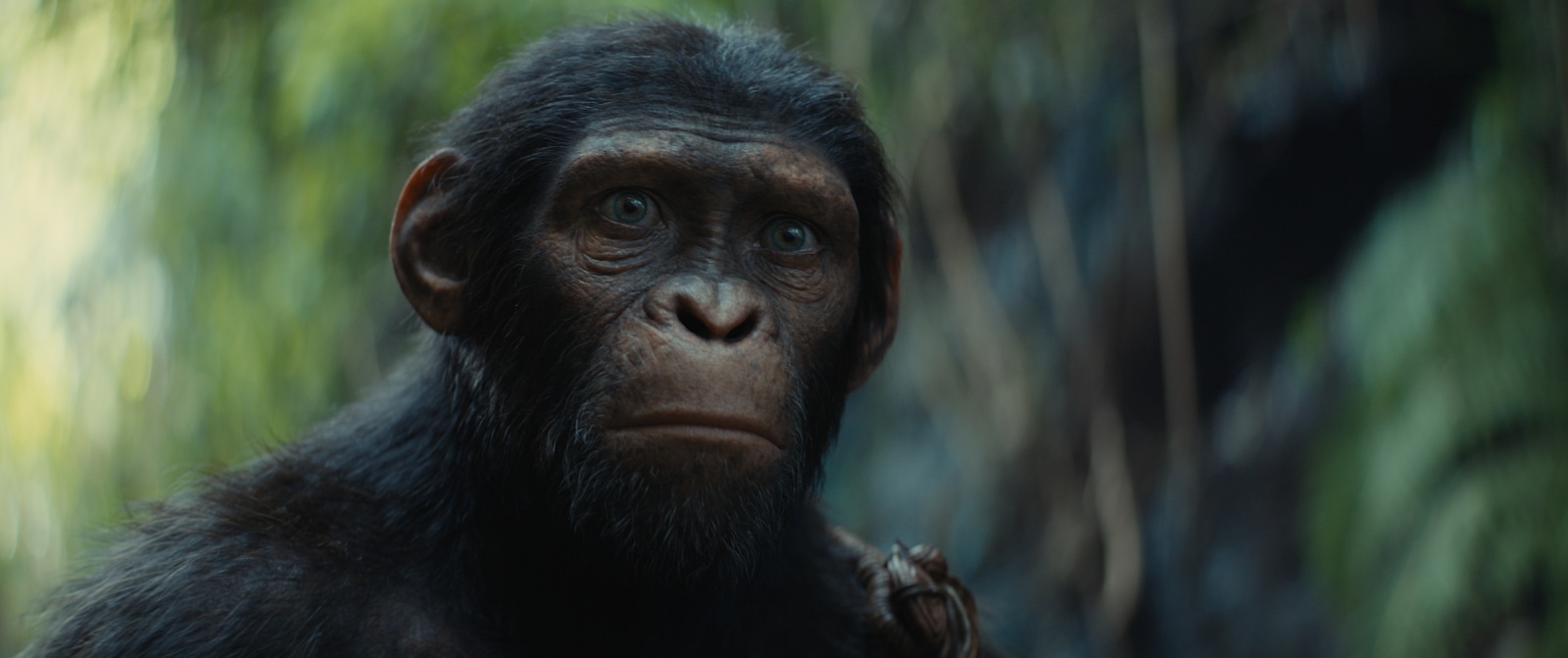


"Rise of the Planet of the Apes: New World" poster
The IP of "Rise of the Planet of the Apes" can be traced back to "Planet of the Apes" released in 1968. The first series consists of five parts, telling the story of a spaceship flying at the speed of light to the future world, and the astronauts discover that humans at that time have become slaves of highly intelligent apes and have to struggle to survive. In 2011, the IP was restarted, and the new series tells the story of Caesar, a chimpanzee who was originally a drug experiment subject, who was unwilling to bear the fate of being destroyed with his own kind, and rose up to resist and became the leader of the tribe.
From 2011 to 2017, the trilogy of the series was released one after another, and while reaping a total of $1.68 billion in box office revenue, it also won good reputations from critics and audiences, with freshness ratings of 82%, 91%, and 94% respectively on the film review website Rotten Tomatoes, making it a classic Hollywood series of films that started off strong and ended strong.

Stills from "Rise of the Planet of the Apes"
The time background of the recently released "Rise of the Planet of the Apes: New World" is set hundreds of years after Caesar's death. The earth has become a wasteland and a veritable jungle of steel and concrete. Apes survive in the form of tribes. The very few humans who survived by chance have lost their language function and are considered inferior creatures by the apes. The tribe where the protagonist Noah, a chimpanzee, belongs to specializes in taming falcons. The young man wanted to show off in front of his father, but he inadvertently brought disaster to his father, and all the tribe members, including his mother, were abducted. In the process of searching for his tribe members, Noah met Laka, a red baboon who was full of wisdom and familiar with history, and Mei, a unique human who could speak. After many twists and turns, Noah and Mei eventually fell into the hands of the dictatorial leader Caesar. Caesar hoped that Mei could help him open the warehouse where humans used to store weapons, and Noah and Mei formed an alliance for their respective goals.

Stills from "Rise of the Planet of the Apes"
Wes Ball, who has established a firm foothold in Hollywood with the "Maze Runner" series, is the director and producer of "Rise of the Planet of the Apes". Owen Teague, who has starred in the "IT" series, plays the protagonist Noah. He has his own unique understanding of this role: "Noah is overprotected and knows nothing about the world. He looks at the past world with a very optimistic attitude, which is an interesting element in the movie: there are two completely different views and interpretations of history, and Noah needs to choose which way to go." The only human protagonist, May, is played by Freya Allan, the star of the American TV series "The Witcher".
Compared with the previous three films, "Rise of the Planet of the Apes: New World" spent more time on creating visual effects, especially in the field of motion capture. In order to achieve a high degree of similarity with the habits of real apes, before the official shooting, the actors participated in a six-week "Ape School" and received special training from action director Alain Gaultier. Andy Serkis, who played Caesar in the first trilogy, was also hired as a special consultant for the film to help the actors fine-tune their voices and perfect their characters.

Stills from "Rise of the Planet of the Apes"
The actual motion capture effects were still done by Weta Workshop, led by Peter Jackson. The visual effects team consisted of two separate groups: a motion capture team, whose job was to capture the actors’ facial expressions and body movements, and a live team, who captured scenes and locations through LiDAR scans and reference cameras so that the light could be replicated in digital space.
"A big step forward for us is using head-mounted facial cameras to record the actors' facial expressions," revealed Erik Winquist, who returned as visual effects supervisor. "Before there was only one camera, but now we use a pair of cameras, which allows us to reconstruct the depth of the face and convert it into three-dimensional geometry, allowing us to record the details of the actors' performances in greater detail." Director Wes Ball emphasized: "We either shoot on site or have a complete CG character, just like Avatar. Our shooting method is more similar to Avatar than The Mandalorian."

Stills from "Rise of the Planet of the Apes"
From the context of the plot, it is not difficult to see that "Rise of the Planet of the Apes: A New World" is highly related to the first two series of this IP. Wes Ball also confessed his love for "Planet of the Apes" in 1968: "In terms of the story, these movies resonate with people because they are science fiction and involve human problems. They expose class and racial issues, explore the meaning of being human, and prompt us to examine, analyze and find out our own deep problems. They are like a mirror, shining on society, allowing us to look at the problems we face as human beings from the perspective of a fantasy world."

Stills from "Rise of the Planet of the Apes"
Regarding the theme of this new work, Amanda Silver, one of the screenwriters, said: "The "Planet of the Apes" series has always asked: Can the same planet accommodate competing intelligent races? In "Planet of the Apes: New World", we will explore this issue again."
Currently, there are 148 reviews on Rotten Tomatoes under the page of "Rise of the Planet of the Apes", and as of press time, its freshness has reached 82%. Many film critics have praised the film's visual effects and conception. For example, The New York Times commented: "It echoes its predecessor and once again explores the rise of idealism and its fate of transformation into dogma." The criticisms are focused on reflecting that the film is too long (2 hours and 25 minutes long) and the rhythm of the plot is not ideal.


